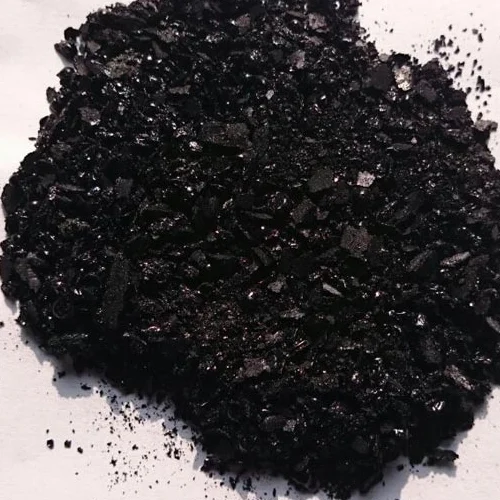china pre reduced indigo dye
The Evolution and Significance of Pre-Reduced Indigo Dye in China
Indigo dye, renowned for its deep blue color, has a rich history and cultural significance in China. As one of the oldest dyes used in textile production, indigo dyeing is an intricate craft that exemplifies traditional Chinese techniques and aesthetic values. Among the various methods of dye preparation and application, pre-reduced indigo dye has emerged as a pivotal approach, blending historical practices with modern innovations.
Historical Background
The use of indigo in Chinese textiles can be traced back thousands of years, with the earliest records appearing in the Han Dynasty (206 BC – 220 AD). During this period, indigo was not only valued for its vibrant color but also for its role in trade. The dye was sourced from various plants, predominantly the indigo plant (Indigofera tinctoria), which required extensive processing to extract the dye compounds. Traditionally, the dyeing process was labor-intensive, necessitating a mastery of techniques passed down through generations.
The Concept of Pre-Reduced Indigo Dye
Pre-reduced indigo dye is a modern adaptation of traditional practices, designed to simplify the dyeing process. In conventional indigo dyeing, the dye must be reduced to a soluble form before it can bond effectively with the fabric. This process typically involves fermentation or chemical reduction, both of which can be time-consuming. Pre-reduced indigo, however, comes in a state where it is already reduced, making it easier for artisans and manufacturers to achieve the desired shade without the prolonged treatment process.
Advantages of Pre-Reduced Indigo Dye
china pre reduced indigo dye

The adoption of pre-reduced indigo dye offers several advantages. Firstly, it streamlines the dyeing process, significantly reducing the time and labor required for preparation. This efficiency is particularly beneficial for large-scale textile production, where time and cost-effectiveness are paramount. Additionally, pre-reduced indigo provides a consistent dyeing quality, allowing for uniformity in color across different batches of fabric. This is crucial for commercial textile manufacturers aiming to meet the demands of the modern market.
Furthermore, pre-reduced indigo presents a more environmentally friendly option compared to traditional methods. Conventional indigo dyeing often involves harmful chemicals and extensive water use, raising concerns about environmental sustainability. In contrast, pre-reduced indigo can often be processed using less water and fewer toxic substances, aligning with increasing global awareness of eco-friendly practices in the textile industry.
Cultural Resurgence and Global Interest
As the world increasingly values sustainable practices, there has been a resurgence of interest in traditional dyeing techniques, including the use of pre-reduced indigo dye. In China, this is evident in the revitalization of indigo dyeing festivals, workshops, and small-scale artisanal ventures that celebrate the heritage of this craft. Artisans are embracing both the traditional and modern applications of indigo, creating items that appeal to both domestic and international markets.
Chinese indigo-dyed fabrics, characterized by their unique patterns and deep hues, have become sought after in the global fashion scene. Designers worldwide are incorporating these textiles into their collections, recognizing the historical significance and artisanal quality they bring. This fusion of traditional craftsmanship with contemporary fashion illustrates the versatility and enduring appeal of indigo dye.
Conclusion
In summary, the evolution of pre-reduced indigo dye in China represents a significant stride in both preserving cultural heritage and responding to modern textile demands. By streamlining the dyeing process and enhancing sustainability, pre-reduced indigo dye not only honors the timeless traditions of Chinese artisans but also paves the way for future innovations in textile production. As global interest in eco-friendly practices continues to grow, the significance of pre-reduced indigo dye will likely expand, ensuring that this age-old craft remains relevant in a rapidly changing world. Through this integration of tradition and modernity, Chinese indigo dyeing continues to inspire and captivate generations, reaffirming its place in both history and contemporary culture.
-
The Timeless Art of Denim Indigo Dye
NewsJul.01,2025
-
The Rise of Sulfur Dyed Denim
NewsJul.01,2025
-
The Rich Revival of the Best Indigo Dye
NewsJul.01,2025
-
The Enduring Strength of Sulphur Black
NewsJul.01,2025
-
The Ancient Art of Chinese Indigo Dye
NewsJul.01,2025
-
Industry Power of Indigo
NewsJul.01,2025
-
Black Sulfur is Leading the Next Wave
NewsJul.01,2025

Sulphur Black
1.Name: sulphur black; Sulfur Black; Sulphur Black 1;
2.Structure formula:
3.Molecule formula: C6H4N2O5
4.CAS No.: 1326-82-5
5.HS code: 32041911
6.Product specification:Appearance:black phosphorus flakes; black liquid

Bromo Indigo; Vat Bromo-Indigo; C.I.Vat Blue 5
1.Name: Bromo indigo; Vat bromo-indigo; C.I.Vat blue 5;
2.Structure formula:
3.Molecule formula: C16H6Br4N2O2
4.CAS No.: 2475-31-2
5.HS code: 3204151000 6.Major usage and instruction: Be mainly used to dye cotton fabrics.

Indigo Blue Vat Blue
1.Name: indigo blue,vat blue 1,
2.Structure formula:
3.Molecule formula: C16H10N2O2
4.. CAS No.: 482-89-3
5.Molecule weight: 262.62
6.HS code: 3204151000
7.Major usage and instruction: Be mainly used to dye cotton fabrics.

